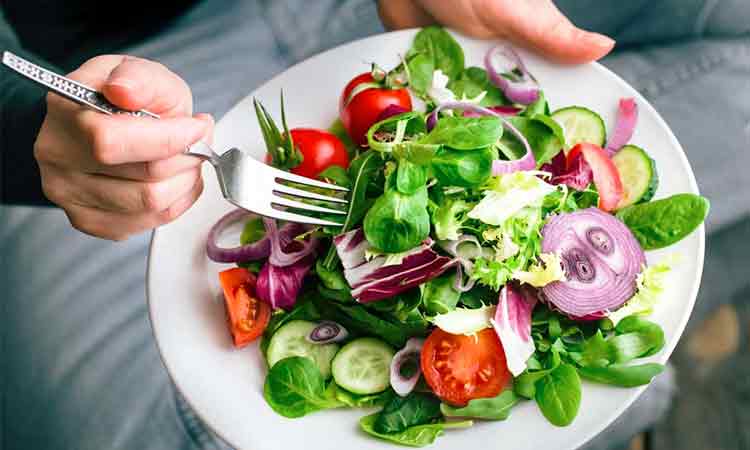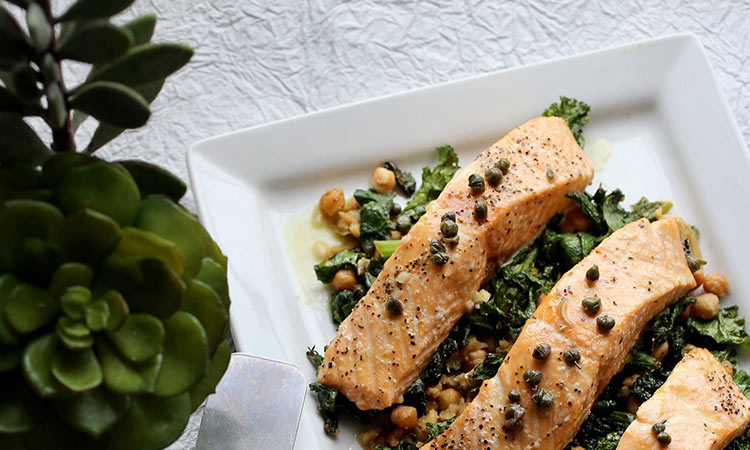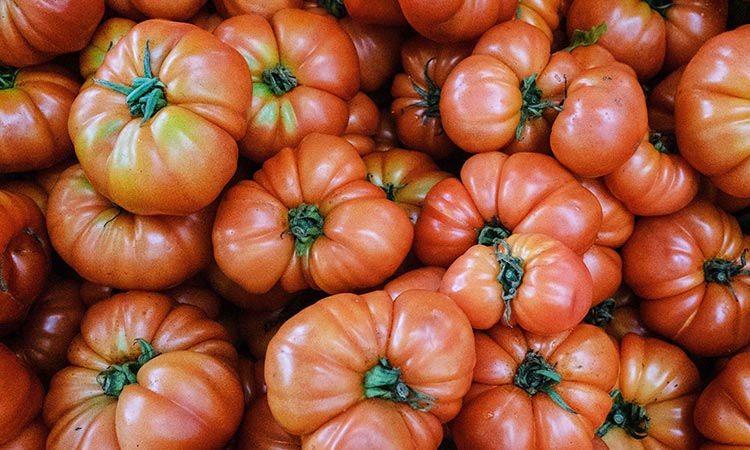
A New Year is upon us, which means it’s only a matter of hours until the hedonism surrounding New Year’s Eve fades and everyone starts looking for ways to better themselves in 2022.
If you want to give yourself a bit of a health boost in 2022, rather than thinking about which foods you should cut out, the British Nutrition Foundation (BNF) suggests looking at which nutrient-rich foods you can add into your diet.
A spokesperson for the British Nutrition Foundation (BNF) suggested nutrient-rich foods to eat that will help those feeling vitamin-deprived in the wake of a party-filled festive season.
“We want people to eat a range of fruit and vegetables,” the BNF spokesperson told The Independent, “but we have tried to get a balance between suggesting specific foods that are rich in nutrients but are not too expensive or niche”.
Salmon
Salmon provides a range of vitamins and minerals, including omega 3s as well as protein, vitamin D, selenium and iodine.

Salmon is rich in omega 3.
The BNF recommends having two portions of fish per week, one of which should be an oily type like salmon. Registered nutritionist Daniel O’Shaughnessy, aka The Naked Nutritionist, advises choosing wild salmon where possible because it is richer in omega 3 content and usually pinker, which means it has more of the antioxidant, astaxanthin, which studies show has been found to improve skin health.
Oats
The BNF says that oats are a brilliant source of fibre, providing a specific type called beta glucan, which can help to lower cholesterol.
Incorporate them into your breakfasts if possible, the organisation suggests, either by making porridge or overnight oats.
Lentils
Plant-based proteins like lentils and beans are a rich source of fibre, says the BNF. They also contain iron and folate, which could help boost energy levels.
Author and nutritionist Jo Travers suggests making dahl with your lentils, when you can add plenty of vegetables for additional nutrients.
If you add tumeric, you can benefit from the anti-inflammatory effect as well while enjoying a slow-release carbohydrate meal.
Nuts
Nuts are often lauded by health professionals thanks to their fibre, protein, unsaturated fat content. The BNF notes that they also provide a range of key nutrients like thiamin and iron, which can help with energy and support your immune system.

Tomatoes are rich in vitamin c.
Go for unsalted varieties and keep portions to a small handful as they’re high in calories, the BNF warns.
Tomatoes
Tomatoes are often underrated. But the BNF says they are rich in vitamin C and natural phytochemicals like lycopene, the natural pigment that gives tomatoes their vibrant red hue.
As for how to eat them in an interesting way, try thinking beyond caprese salads and pasta sauces. You can add tomatoes to curries, soups, or vegetable bakes.
Apples
Apples provide soluble fibre as well as polyphenols, which can treat digestion problems and help protect you from cardiovascular disease, notes the BNF.
They are best eaten as either a healthy snack, or with porridge for breakfast.
Green vegetables
We’ve all heard this one before. But leafy green vegetables are one of the healthiest foods around thanks to the multiple vitamins they contain.
Vegetables like spinach, broccoli and cabbage tend to provide vitamins C and A, folate and potassium, notes the BNF, subsequently boosting immunity, energy and skin health.
Broccoli is also one of the most nutritious, says O’Shaughnessy, because it contains DIM (Di-indolyl Methane), which is a powerful aromatase inhibitor. This means it can support hormone balance.
Plain yoghurt
Plain yoghurt might sound uninspiring but it’s a great base for snacks and desserts when you’re trying to avoid sugary foods, says the BNF.
It also provides protein, calcium, riboflavin and iodine, which plays a vital role in thyroid health.
Choosing plain versions also means you avoid any added sugars. For flavour, try adding dried or fresh fruit, or nuts and seeds.
Whole grains
Wholegrain carbohyrates like bread, pasta, bulgar wheat or freekeh are quick and easy to cook and rich in fibre as well as nutrients like niacin and phosphorus, which helps the body repair tissues and cells.
“These foods give us the energy we need to function without spiking blood sugar,” says Travers. “Stick to a fist-size portion at a time.”
Citrus fruits
Citrus fruits are in season at this time of year, meaning they are a sustainable choice as well as a healthy one.
Foods like oranges, lemons and grapefruits are rich in vitamin C, says the BNF, and provided folate, which helps convert carbohydrates into energy and is crucial for women during pregnancy.
You can easily add lemons and limes to your diet by adding them to salad dressings or using them to season other dishes, which the BNF says could help you to cut down on salt.












